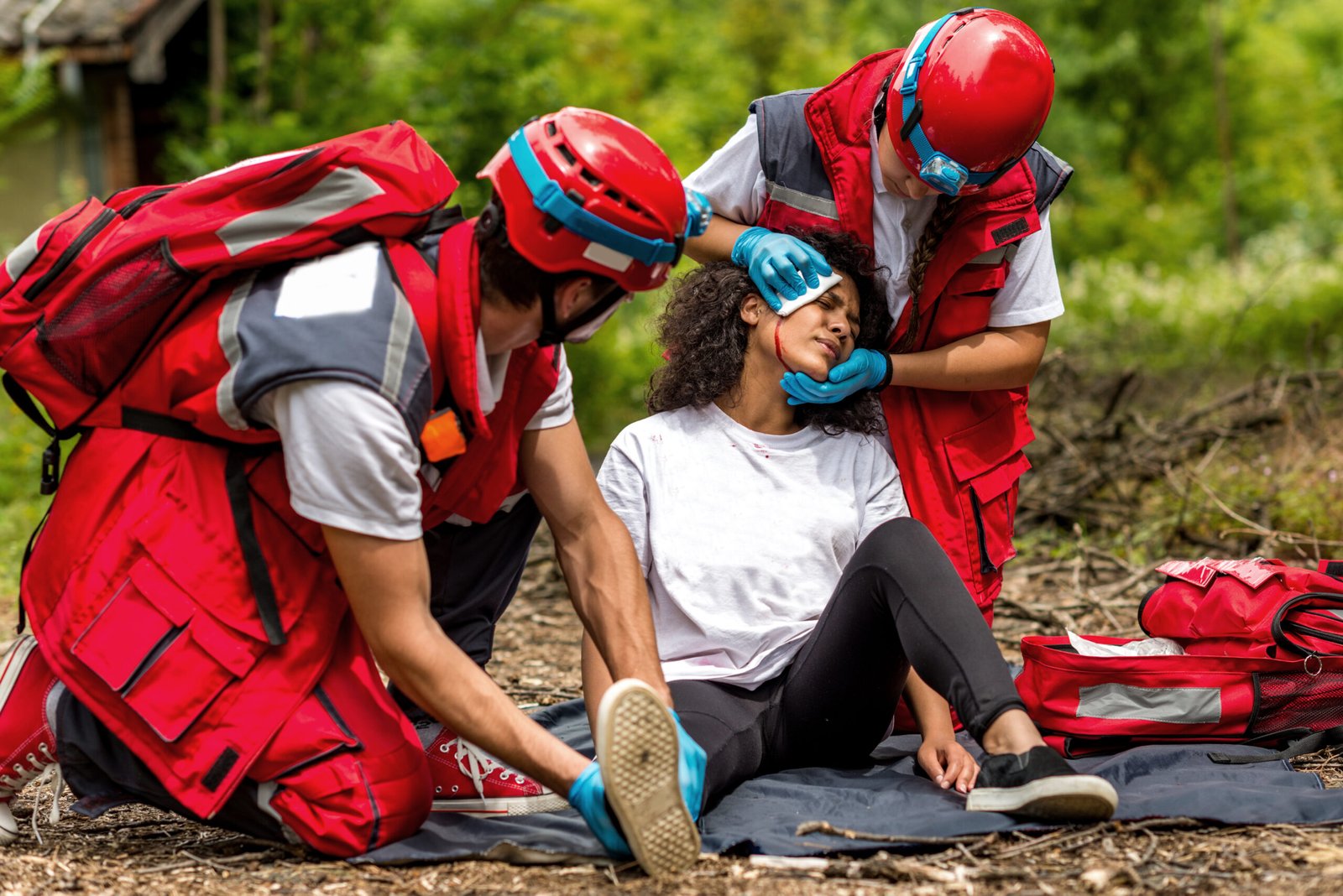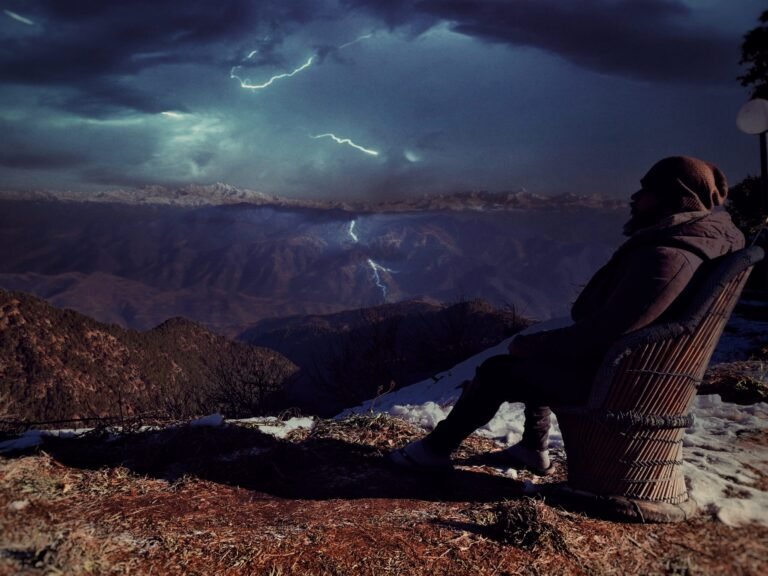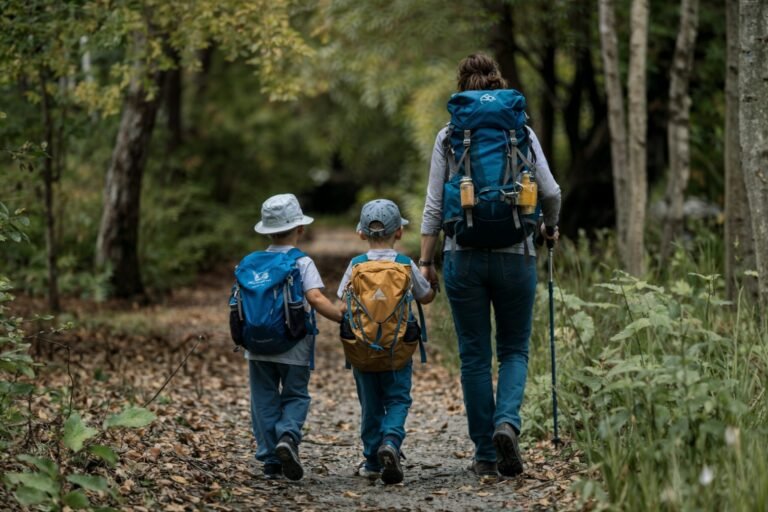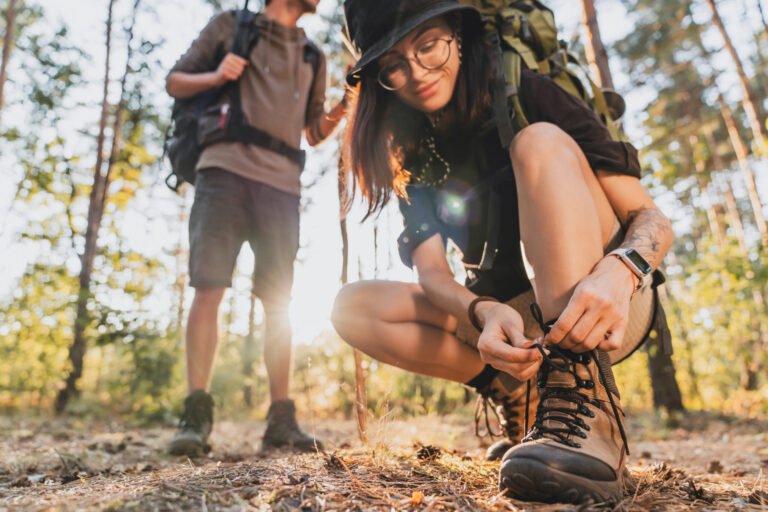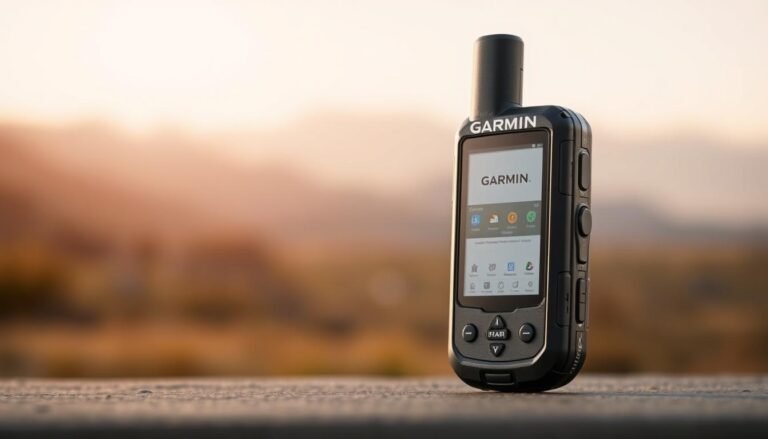The 15-Minute Wilderness Protocol: The Emergency Response System Saving Lives on Remote Trails
Get equipped with the 15-Minute Wilderness Protocol, a straightforward guide for Saving Lives on Remote Trails during emergencies.
In a recent harrowing incident on the Continental Divide Trail, a hiker’s emergency situation was resolved thanks to modern technology. Separated from his wife during challenging winter conditions in Colorado’s San Juan Mountains, he used his iPhone 14’s emergency satellite feature to contact rescue services after 34 hours. Let’s discuss Saving Lives on Remote Trails.

This incident highlights the critical importance of having reliable emergency response systems in place for hiking and wilderness adventures. The 15-Minute Wilderness Protocol is a crucial system designed for backcountry emergency situations where every minute counts toward life and safety.
Understanding and implementing this protocol can be the difference between life and death on remote trails where help may be hours away. This comprehensive guide will walk through the essential components of the 15-Minute Wilderness Protocol.
Understanding the 15-Minute Wilderness Protocol
The 15-Minute Wilderness Protocol is revolutionizing emergency response in remote areas. This protocol is designed to provide a structured approach during the critical initial minutes following a wilderness emergency.
What Defines a Wilderness Emergency
A wilderness emergency occurs when an individual is injured or experiences a life-threatening condition in a remote area, far from immediate medical help. Such situations demand swift and effective response strategies.
The Golden Hour in Backcountry Rescue
The concept of the “Golden Hour” is crucial in emergency response. It refers to the first hour following a traumatic injury, during which medical intervention can significantly impact survival rates and recovery outcomes. In backcountry rescues, getting help to the victim within this timeframe is often challenging.
Why 15 Minutes Makes a Critical Difference
The initial 15 minutes after recognizing an emergency are pivotal. Decisions made during this period determine the success of the rescue operation. The 15-Minute Protocol emphasizes efficiency and clarity, ensuring that critical information is collected and transmitted promptly.
- Critical Decision-Making: The first 15 minutes represent a window for critical decision-making that impacts the entire rescue operation.
- Impact on Survival Rates: Actions taken during these initial minutes directly affect survival rates through proper assessment, location identification, and distress signal transmission.
- Structured Approach: The 15-Minute Protocol provides a structured approach, reducing the likelihood of poor decision-making due to panic or confusion.
Essential Technology for Saving Lives on Remote Trails
When venturing into remote wilderness areas, having the right technology can be the difference between life and death. The advancements in satellite communication devices have significantly improved the chances of rescue in emergency situations.
Satellite Communication Devices Comparison
Various devices offer different features that cater to the needs of hikers and adventurers. Understanding these differences is crucial for selecting the right technology.
Dedicated Emergency Beacons (ACR ResQLink, SPOT)
Dedicated emergency beacons like the ACR ResQLink and SPOT devices are designed specifically for emergency situations. They offer reliability and simplicity.
Smartphone-Based Solutions (Apple SOS, Garmin inReach)
Smartphone-based solutions such as Apple SOS and Garmin inReach provide an alternative to dedicated beacons, leveraging the functionality of smartphones for emergency communications.
GPS Location Accuracy in Emergency Situations
The accuracy of GPS location is critical in emergency responses. Devices with precise GPS capabilities can significantly reduce rescue times.
Modern devices, including both dedicated beacons and smartphone-based solutions, offer high GPS accuracy, ensuring that rescuers can locate individuals in distress quickly.
Battery Life Considerations for Wilderness Travel
Battery life is a crucial factor when choosing an emergency device, especially for extended hiking trips. Devices like the Garmin inReach Mini can last up to 24 days on a single charge in power-saving modes, compared to about a day for an iPhone 15.
Battery management becomes a critical safety consideration for multi-day hiking trips. Dedicated emergency beacons offer significantly longer operational life than smartphones.
- Battery-saving techniques like keeping devices in airplane mode can extend operational life.
- Carrying backup power solutions such as solar chargers is essential for extended wilderness travel.
- Cold temperatures dramatically reduce battery performance, making protection from extreme temperatures crucial.
Some hikers opt to carry both a smartphone and a dedicated beacon to combine the user-friendly interface of phones with the battery longevity of purpose-built emergency devices.
Implementing the 15-Minute Protocol Step by Step
The key to surviving wilderness emergencies lies in the proper implementation of the 15-Minute Protocol. This protocol is designed to be straightforward and effective, ensuring that individuals in distress can quickly alert rescue services and receive the help they need in a timely manner.
Initial Assessment: Determining When to Activate
The first step in implementing the 15-Minute Protocol is to assess the situation and determine if activation is necessary. This involves evaluating the severity of the emergency and deciding whether immediate action is required. According to Leum from LASD, “The great thing about that feature—is that it is a two-way communication device.” This capability allows for a quick and informed decision regarding the need for rescue.
Establishing Your Exact Location
Once the decision to activate the protocol is made, the next critical step is to establish your exact location. This is crucial for the rescue team to locate you efficiently. Using GPS devices or satellite communication tools can help in determining your precise location, which should then be communicated to the rescue services.
Sending the Distress Signal Properly
Sending a distress signal is a critical component of the 15-Minute Protocol. It’s essential to use the available technology effectively to send a clear and concise message to the rescue services. As emphasized, effective two-way communication with the rescue team forms a crucial component of the protocol, allowing for coordinated response efforts.
“So when they send the 911 text message, the station can reply and find out very important information like: Is anybody hurt? How many people are with you? Does anyone have any medical conditions?” – Leum from LASD.
Communication Strategies with Rescue Teams
After sending the distress signal, maintaining effective communication with the rescue team is vital. This includes being prepared to provide updates on your condition and any changes in your situation. Establishing a communication schedule can help manage device battery life while ensuring regular status updates. It’s also important to conserve battery power, as rescue operations can take several hours to mobilize and reach remote locations.
By following these steps and maintaining clear communication, individuals can effectively utilize the 15-Minute Protocol to secure timely assistance in wilderness emergencies.
Real-Life Wilderness Rescues Using the Protocol
The effectiveness of the 15-Minute Wilderness Protocol is best illustrated through real-life rescues that have utilized its guidelines. These incidents not only demonstrate the protocol’s potential to save lives but also highlight the critical role of technology in modern wilderness rescue operations.
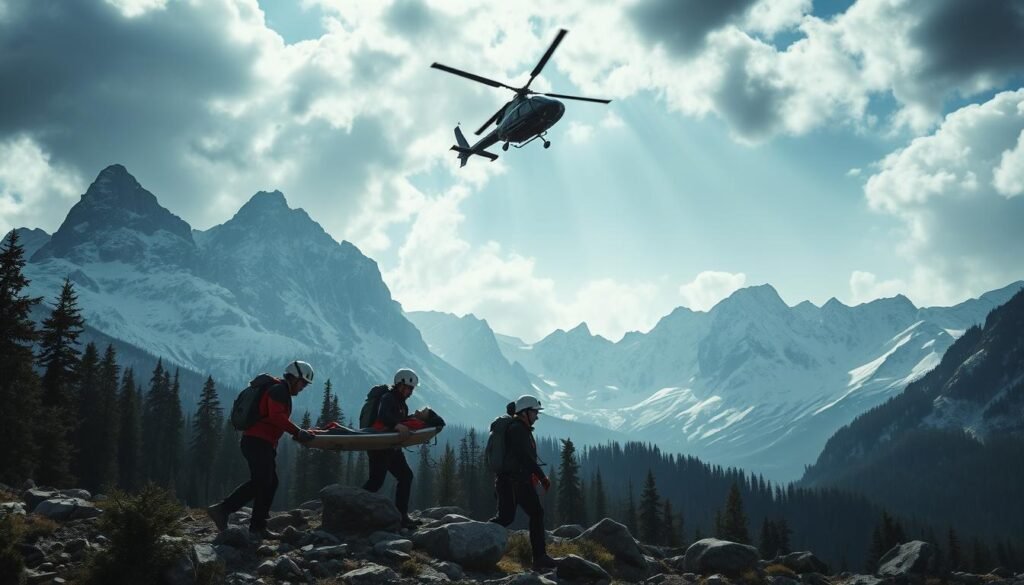
Several recent cases underscore the importance of adhering to the 15-Minute Wilderness Protocol. For instance, a dramatic rescue on the Continental Divide Trail showcased the protocol’s effectiveness in responding to emergencies.
The Continental Divide Trail Separation Incident
A hiker on the Continental Divide Trail became separated from their group and failed to return to the designated meeting point. Fortunately, the hiker had activated their satellite communication device, sending a distress signal that included their GPS location. This prompt action enabled SAR (Search and Rescue) teams to locate the hiker quickly, despite the remote location.
The rescue was successful due to the hiker’s preparedness and the efficient response of the SAR teams. This incident demonstrates the feature of modern rescue services that rely on advanced technology to pinpoint locations and dispatch help promptly.
Automated Fall Detection Saving a Hiker’s Life
In another incident, a hiker benefited from an automated fall detection feature integrated into their wearable device. After a severe fall, the device automatically sent a distress signal to emergency services, including the hiker’s precise location. The prompt response by rescue teams was instrumental in saving the hiker’s life.
This case highlights the value of wearable technology in wilderness safety, particularly for solo hikers who may not have immediate assistance available.
Vehicle Crash Detection in Remote Mountain Areas
A notable example of the 15-Minute Wilderness Protocol’s success involved a vehicle crash in a remote mountain area. The vehicle’s advanced crash detection system automatically alerted authorities, providing them with the exact location of the incident. Responding to the alert, SAR teams were able to reach the scene quickly and provide critical medical assistance.
The incident, reported by the Los Angeles County Sheriff’s Department, involved a vehicle that had fallen 400 feet down a mountainside. The driver, who was bleeding profusely, was located and received immediate medical attention, including a helicopter evacuation. The quick response was credited with saving the driver’s life, underscoring the importance of having advanced safety services and technologies in place, especially in areas frequented by hikers and outdoor enthusiasts.
These real-life rescues demonstrate the critical difference that the 15-Minute Wilderness Protocol, coupled with advanced technology, can make in emergency situations. By understanding and implementing this protocol, individuals can significantly enhance their safety while enjoying wilderness adventures.
Preparing Before You Need a Rescue
Proper preparation is crucial for hikers to ensure their safety while exploring remote wilderness areas. The decisions made before an emergency occurs often determine the outcome more than actions taken during the crisis itself.
To be prepared, hikers should thoroughly research and understand the capabilities and limitations of their emergency communication devices, such as satellite phones, before venturing into remote areas. It’s also essential to test these devices at least once a year in a controlled setting to ensure familiarity with the activation process and confirm that the technology is functioning properly.
Creating a detailed trip plan that includes routes, expected campsites, and timeline, and sharing it with trusted contacts, is another critical step. Establishing clear check-in protocols with others and defining what constitutes a missed check-in helps ensure timely activation of search efforts if something goes wrong. By combining these preparations with traditional wilderness skills, hikers can significantly enhance their safety and potentially avoid the need for a rescue.
As emergency technology continues to evolve, staying informed about new features and capabilities should be part of every hiker’s ongoing safety education. This proactive approach, coupled with the right mindset and preparation, can make a significant difference in life-threatening situations. For more great articles, check out the rest of our digital magazine.
The 15-Minute Wilderness Protocol: The Emergency Response System Saving Lives on Remote Trails emphasizes the importance of being prepared in the wilderness. Regular device testing and creating a detailed trip plan can help ensure hikers’ safety in case of emergencies. Establishing check-in protocols and combining modern technology with traditional skills can enhance hikers’ safety and prevent the need for search and rescue missions. Stay informed about emergency technology advancements to further improve safety during outdoor adventures.

